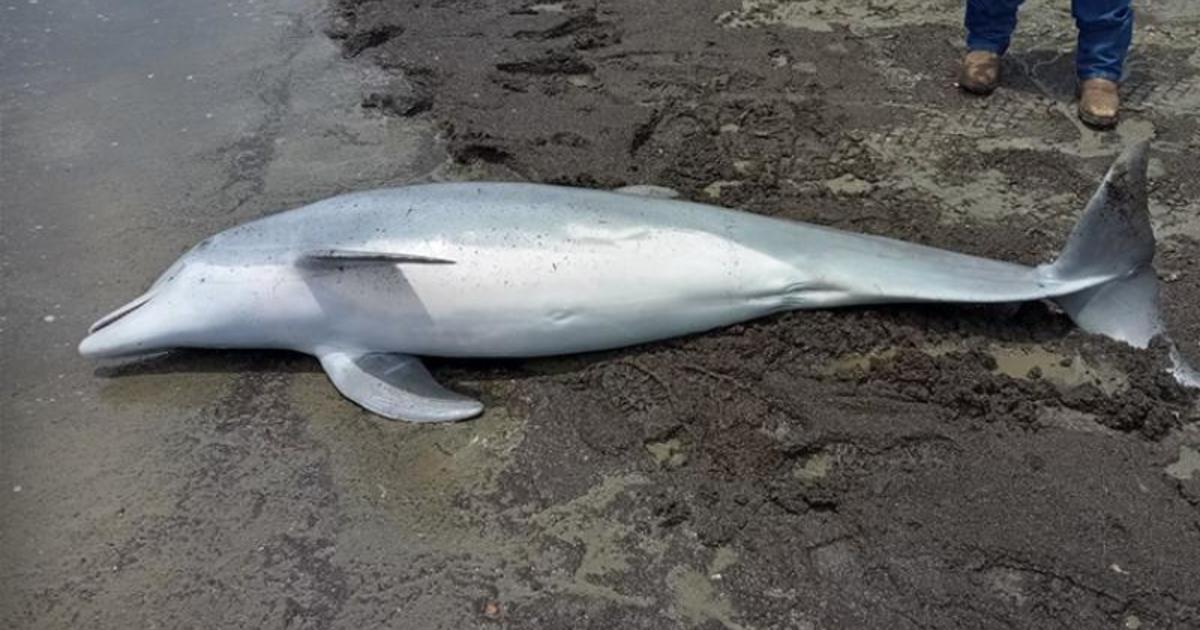Tal Afar: Al Qaeda's Town
This story originally aired on March 12, 2006.
This is a story about an entire city that was taken over by al Qaeda. It’s called Tal Afar and about 200,000 people who live there became prisoners in their own homes when terrorists took control and turned it into their town.
They used Tal Afar as a base to train insurgents and launch attacks around Iraq. Last fall, as correspondent Lara Logan found out when she traveled there, U.S. and Iraqi forces were determined to recapture Tal Afar, and the Bush administration has pointed to that operation as a model for how to fight and win the rest of the war.
“Al Qaeda in Iraq had a very sophisticated strategy for taking over the city,” says Colonel H.R. McMaster.
And he should know. For a year, Col. McMaster served as one of the military’s top advisers on fighting the Iraqi insurgency. Yet he says when he came to Tal Afar in May of 2005, he didn’t realize how badly al Qaeda had brutalized the people.
“They fired mortars indiscriminately into playgrounds, into school yards, across the marketplace to kill innocent civilians. What they really wanted to do was incite fear,” explains McMaster,
Asked what life was like for the inhabitants of Tal Afar, McMaster says, “Life was horrible in the city. They would leave headless bodies in the street. They kidnapped a young child on one occasion, killed the child, put a booby trap inside of his body and waited for the father to come claim the body to kill the parent.”
Masked gunmen led by al Qaeda roamed the streets of Tal Afar at will, publicly executing and kidnapping people. Col. McMaster told 60 Minutes some of the terrorists were foreign fighters, but many were Iraqis from the area. Pictures of their attacks were circulated in videos like one in which you can hear them chanting a call to jihad.
“They had schools for snipers. They had kidnapping and murder classes that were attended by people on the best techniques,” says McMaster.
The colonel says he was surprised to learn the enemy in Tal Afar was so organized. “You had this blending of former military expertise and organizational ability with, with a radical Islamic ideology, and it was fertile ground here.”
Col. McMaster is a soldier-scholar, known for writing a book that found fault with military and political leaders during the Vietnam War. As commander of the 3rd Armored Cavalry, he was given the mission to recapture Tal Afar. He told 60 Minutes that to defeat an insurgency, you have to win the trust of the people.
“The enemy showed the people who they really are. These are mass murderers. These are people who don’t have respect human life,” says McMaster. “These are people who want to choke the life out of cities like Tal Afar.”
“Al Qaeda planted its flag in Tal Afar and said ‘This is ours,’” says Michael Ware, then Baghdad bureau chief for Time Magazine.
Ware was able to take pictures of the city while it was still under terrorist control last summer. The video, which 60 Minutes bought from him, shows Tal Afar had become a ghost town, with the streets deserted, shops closed and whole families so afraid that they stayed behind closed doors.
Ware agrees with the notion that al Qaeda could do whatever they wanted in Tal Afar. “They owned Tal Afar,” he says.
There was nobody to stop them and Ware says, “They were the authority.”
Al Qaeda used Tal Afar as a staging area for fighters arriving from Syria to launch attacks in the rest of Iraq.
“Anybody and anything could just move right through the one legal border crossing here,” says Col. McMaster.
“But that was two years into the war. Where was the U.S. presence?” asks Logan.
“The border was secured to some degree, you know,” Col. McMaster says.
“It sounds like there weren’t enough U.S. forces on the ground to secure that border,” Logan responds.
“Yeah, I think that’s clear,” the colonel replies.
U.S. forces drove the terrorists out of Tal Afar in 2004, but they left too few troops behind to hold the city. Al Qaeda came flooding back and took revenge on anyone who had helped the Americans. Col. McMaster told 60 Minutes that al Qaeda’s strategy was to incite civil war within Tal Afar’s biggest ethnic group, the Turkomen, by using violence to turn Turkomen Sunnis against Turkomen Shiites.
When Time Magazine’s Ware met up with McMaster’s forces in August 2005, Tal Afar was so dangerous that the soldiers had to run for cover the moment their boots hit the ground.
Pictures filmed by Ware showed U.S. forces running the moment they left their armored vehicles. “It was the only way to survive in that city,” he explains. “You couldn’t even sit inside your tank without being shot.”
McMaster expected the bloodiest battle in a neighborhood of the city called Sarai, where al Qaeda had its headquarters. To help his cavalry troops, he was relying on thousands of Iraqi infantry led by U.S. Special Forces.
“The troops I were with were what you would loosely describe as the tip of the spear. They were the men selected to go into the worst of the worst. They were to drive the stake into the dark heart of the al Qaeda stronghold,” says Ware.
On the morning of September 3, 2005, the attack began.
For the first three days, they fought through the city street by street. Whenever possible, they used the rooftops, to avoid booby traps al Qaeda fighters had planted to slow them down.
Frightened families were ordered out of their homes, as explosions echoed around them. Those who couldn’t walk were carried. There were children clutching white flags.
By the third day of fighting, the Iraqi and American soldiers were in place to make the final assault on al Qaeda’s stronghold. They were taking fire from a nearby building, so American Green Berets called in an air strike.
“We had rounds cracking literally around our heads,” recalls Ware. “The bullets were whizzing in front of me and behind me.”
As the fighting continued, the troops were anxious to advance, but they had orders to hold their positions and wait two days for more civilians to get out.
Then something happened that Col. McMaster had not planned for: Politicians in Baghdad forced a delay of three more days, apparently concerned about civilian casualties.
Ware says to the soldiers, he was with it looked like the delay gave al Qaeda time to escape.
“The al Qaeda presence in Tal Afar was surrounded. And the attack was primed. And then it was stopped dead in its tracks. And so, as the troops I was with battled throughout the day and into the night with al Qaeda fighters so close you could throw a stone and hit them, when we woke up the next morning — poof — they were gone!” says Ware.
Asked if the delay cost him in terms of giving the enemy time to escape, McMaster says no.
“Your forces were sitting outside Sarai. They were preparing for the big battle. I mean this was really gonna be the fight of the fight. And what emerged was nothing,” says Logan.
“What we have to do is be flexible and adapt to changes in the situation. And we were able to do that,” McMaster replies.
When the troops finally entered the Sarai section of Tal Afar on the ninth day of the battle, they used tanks to blast holes through buildings so the soldiers could move forward without being exposed.
But after waiting so long, Michael Ware says the momentum was gone; and — so it seemed — was the enemy.
“Where an entire al Qaeda society had existed, the troops that I was with found one body,” Ware recalls.
To prove they were not defeated, al Qaeda unleashed 12 suicide bombers in a day of bloodshed in Baghdad. They publicly called it revenge for the loss of Tal Afar, where the U.S. Army calculated enemy dead at 151. Eight Iraqi soldiers and one American were also killed. But Col. McMaster told 60 Minutes that using numbers to measure victory is a mistake.
“Body counts are completely irrelevant. I mean, what is relevant is, ‘Is the population secure so that political development, economic development can proceed?’” he explains.
So the U.S. military began training a new police force right away, recruiting both Shiites and Sunnis to patrol the streets. Schools and markets were reopened. And Col. McMaster was able to bring together religious leaders who hadn’t spoken for months.
American soldiers like Capt. Jesse Sellars have taken on added responsibilities. On regular patrols through the city, he is part politician and part policeman.
These days, he walks the streets like the pied piper, with crowds of Iraqi children chanting his name. They’re the same streets he fought for just a few months ago.
He couldn’t do this before the battle of Tal Afar. “No way, at least not without getting into a gunfight,” says Capt. Sellars.
Asked what it means to him to see stores reopen in Tal Afar, Sellars says, “It’s a sign of success. It’s a sign of victory, you know.”
In the market with Capt. Sellars, Logan met Akeel Karaja, a Sunni merchant who had just reopened his family shop. He was eager to explain how life in Tal Afar had improved.
Karaja says under al Qaeda he would not have been able to talk to Logan. Asked what would have happened to him, he says, “They would have cut my head. Beheaded me.”
He said though, there are still people to fear in Tal Afar. Just a month after al Qaeda was driven out of the city, his own father was killed in a suicide bombing.
“There were enemy fighters that got out and lived to fight another day,” Logan said,
“Anybody who wants to come to Tal Afar as a terrorist, I say, ‘Bring ‘em on,’” McMaster replied.
“Is that a yes?” Logan asked.
“If anybody tries to operate in Tal Afar, they’re gonna be detected and …” the colonel replied.
“But is that a yes, colonel? Are they trying to come back?” Logan asked.
“Oh yes. Of course the enemy is trying to come back. In an insurgency, there’s not going to be a big decisive battle and then the white flags come out and it’s over, OK,” says Col. McMaster. “But what we have here is as close to that as you really can get.”
Almost a year after 60 Minutes’ visit to Tal Afar, U.S. and Iraqi forces are still in control of the city. But the insurgency has not been defeated and attacks continue. One of the most devastating took place in May, when a suicide car bomb killed at least 17 people and wounded more than 30.
Produced By Josh Yager




